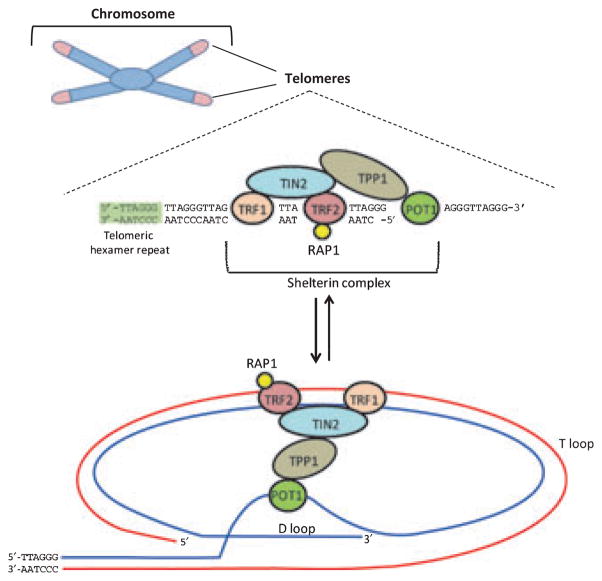Figure 1.
Telomere Structure. Human telomeres are regions of DNA that cap the ends of chromosomes and consist of 8–15 kb of repeats of the hexamer TTAGGG that terminates in a 3′ G-rich overhang. The DNA of telomeres is found complexed with a large number of proteins, including the six that comprise the shelterin complex: telomeric-repeat binding factor 1 (TRF1), TRF2, RAP1, TIN2, TPP1 and POT1. These proteins help create a protective structure at chromosome ends, known as the telomeric loop (or t loop). The single-stranded G-rich overhang invades the double-stranded helix of the telomere, protecting the single-stranded DNA (now in the displacement, or D loop) from detection by DNA damage machinery. See text for references.

